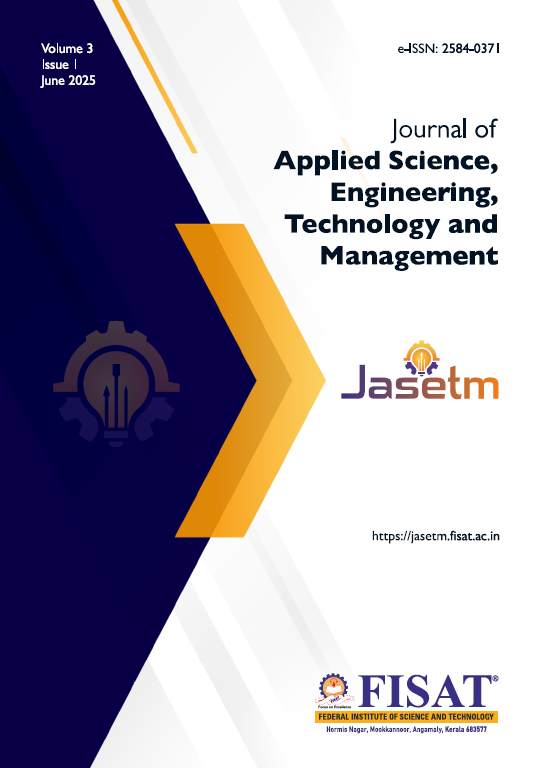Li-Fi Based Image Transmission
DOI:
https://doi.org/10.61779/jasetm.v3i1.7Keywords:
Li-Fi, Image Transmission, Arduino, Raspberry Pi, Visible Light Communication, Wireless CommunicationAbstract
Communication is an essential part of modern life, powering everything from personal devices to industrial systems. Traditional wireless communication technologies primarily rely on radio frequency (RF) transmission, which faces challenges such as bandwidth limitations, interference, and restrictions in sensitive environments like hospitals and aircraft. This paper presents a prototype system for image transmission using Light Fidelity (Li-Fi), a wireless communication technology that utilizes visible light. We propose a method in which grayscale images are converted into binary data via Python, and transmitted using LED pulses controlled by an Arduino. The receiving end employs a photodiode and a comparator to detect signals, which are then decoded and reconstructed by a Raspberry Pi. The system transmits images at a fixed bit rate of 4 bps using a simple protocol with periodic start sequences. Our results demonstrate successful image reconstruction but also highlight challenges such as synchronization drift and limited throughput. This work showcases the feasibility of Li-Fi-based image communication in low-speed, RF-sensitive applications and provides a basis for future enhancement.
References
S. Kumar and H. Lee, "Design and implementation of a Li-Fi data communication system," in Proc. IEEE Conf. on Wireless Optical Communications, 2018.
L. Rodriguez, J. Kim, and M. Patel, "High-speed optical communication using LED and photodiode," Optoelectronics Letters, vol. 15, no. 2, pp. 110–115, 2019.
X. Chen and N. Patel, "Wireless image transmission via Li-Fi: A prototype system, Int. Journal of Optical Networking, vol. 12, no. 1, pp. 34–40, 2020.
D. Smith, "Adaptive synchronization techniques in Li-Fi networks," IEEE Trans. on Lightwave Tech., vol. 39, no. 5, pp. 1883–1891, 2021.
R. Gupta and Y. Zhao, "Optical wireless communication with Arduino and Raspberry Pi," in Proc. Int. Conf. on Embedded Systems, pp. 58–63, 2021.
B. Davis, L. Thomas, and K. Shah, “Robust clock synchronization in Li-Fi systems using wireless methods,” J. Commun. Tech. and Electronics, vol. 67, no. 7, pp. 210–218, 2022.
M. Thompson, “Enhancing data integrity in Li-Fi communication with error correction,” Optical Comm. Research, vol. 23, no. 4, pp. 99–106, 2022.
H. Nguyen and C. Alippi, “A review of optical wireless communication technologies in IoT applications,” ACM Computing Surveys, vol. 52, no. 3, pp. 1–27, 2020.
Downloads
Published
How to Cite
Issue
Section
License
Copyright (c) 2025 Parthiv A , Vishnu V B , Shahila T I, Loyd John J, Anil Johny

This work is licensed under a Creative Commons Attribution 4.0 International License.
Authors retain copyright and grant the journal right of first publication with the work simultaneously licensed under a Creative Commons Attribution License that allows others to share the work with an acknowledgement of the work's authorship and initial publication in this journal.
Authors are permitted and encouraged to post their work online (e.g., in institutional repositories or on their website) after the acceptance, with an acknowledgement of its initial publication in this journal, as it can lead to productive exchanges, as well as earlier and greater citation of published work.






